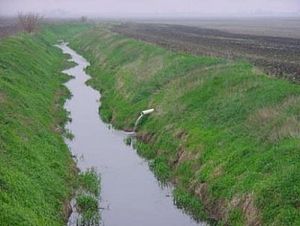Tile Drain Advocacy

Tile drain outlet to a ditch. Image by Todd Royer.
In December 2015, LCC and a number of other environmental groups sent a letter to the Vermont Agency of Agriculture and Department of Environmental Conservation urging them to take proactive actions to decrease environmental damage caused by agricultural tile drains. Tile drains are used extensively in agricultural areas to provide quick drainage of wet soils and increase crop yields. They transform the dominant water flow paths from overland to subsurface and also change the way phosphorus and nitrogen are delivered to receiving waters. The ramifications for Lake Champlain are not always clear but it is likely that tile drainage increases discharge of soluble phosphorus from the landscape, and soluble phosphorus is a potent feeder of algae blooms. The Agency of Agriculture is charged with preparing a report to the legislature on the impacts of tile drains and recommended practices for their use. The preliminary report was due in January but has been delayed until mid-February 2017.
Here's the problem: tile drains are being installed at an extremely high rate in the Lake Champlain Basin, particularly in Franklin County, Vermont yet there are no practices in place to ensure that the systems do not result in the discharge of more phosphorus into the Lake. In the absence of good information about the impacts of tiles and to ensure good stewardship, LCC has called for a moratorium on the installation of new agricultural tile. We are also asking for an aggressive plan to capture much-needed information about tile drains, including mapping the location of existing tile drains and monitoring the outfalls into state waters. Any farms with tile drainage systems should provide information necessary for the state to map their locations, including outfalls and soil types. There should also be regular reporting and sampling requirements for discharges from tile outlets, including weather and land application conditions.
Tile drains have been drawing more and more scrutiny as a potential driver of algae blooms. A recent issue of the Journal of Environmental Quality focused on tile drains, their impacts and management. One of these papers identified tile drains as the source of nearly 50% of both dissolved and total phosphorus that left Ohio cornfields. Expect tile drains to receive more scrutiny in our attempts to combat algae blooms on Lake Champlain.
